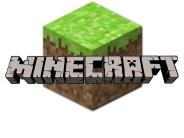 Dr. Chris Haskell’s book, “Play This, Learn That” describes the use of commercial games in the classroom. This blog post will serve as a reflective journal as I read through the contents of the book for EDTECH 532. Introduction: In this section of the book, Haskell discusses the lackluster development of Serious Games, which are overtly educational in nature. The example he references is Oregon Trail, which I absolutely loved playing in fourth grade. Haskell contends that while this game is an excellent example of its genre, most Serious Games are far less well developed. The topic of gamification is explored, and Haskell identifies the hallmarks of gamification as experience points, badges/rewards, quests or missions, leveling and rankings, visual indicators of progress, and player autonomy (choice). He also covers the concept of contextual transposition, which is when tools built for a particular purpose are leveraged for a new context. An example of this in my classroom is using student-created Instagram pages or text messages/emojiis to showcase understanding of text or historical events. The example Haskell includes is the creation of memes from existing photos. After taking EDTECH 531, I hope to use Minecraft to teach students about the Agricultural Revolution. This is an example of the type of contextual transposition inherent in video games. Ultimately, we want to explore the following question: How can we take commercial games and leverage them for greater educational purposes? My best, most concise elevator pitch for game-based learning so far is this: Games grant students the opportunity to learn in a creative, autonomous, compelling environment that fosters extreme motivation, multiple attempts at learning, and an attitude of perseverance.  In chapter one of his book, Haskell explains the inner workings of Minecraft, including the user interface and the basic premise of a world comprised of blocks that can be placed, mined, and transformed. I was fortunate to explore Minecraft in EDTECH 531 for more than half of the fall semester, so I am very familiar with its inner workings and potential merits in the classroom. My favorite aspect of Minecraft is collecting and crafting resources. There is a special joy that comes from acquiring the “just right” ingredients to make whatever is needed. The most redeeming quality of Minecraft is its versatility. Teachers can leverage this tool to teach a variety of concepts in practically any content area. For example, Glen Irvin uses Minecraft to assist his foreign language students in acquiring and utilizing Spanish. He was a guest speaker for our class last term and I very much enjoyed touring his customized Minecraft map. Irvin shared that students generate their own homes and economy in world, while also embarking on quests to gain XP and further their understanding. Irvin utilizes MinecraftEDU, which allows him to control/teleport players and modify the environment (ex: regulating day/night cycles during class time). Jim Pike uses Minecraft in elementary math to introduce students to algebraic concepts as they build structures according to specific dimensions. Minecraft is a sandbox environment that gives students the freedom to create. The environment allows for autonomy, which students find engaging. Perhaps most importantly, Minecraft can be a collaborative environment wherein students learn to work together to achieve common goals. My husband, a special education teacher, used Minecraft to help teach social skills to his emotionally disturbed students, and he currently plays with his 6th-8th grade math students. Most of my pressing questions regarding Minecraft center around the logistics of getting it into my classroom. I am currently working with the ETIS department and technology TOSAs to find tech that meets the specifications required for Minecraft: Education Edition. My biggest struggle at present is a lack of Windows 10 devices.
0 Comments
|
Author: Jessica PackCalifornia Teacher of the Year. CUE Outstanding Educator 2015. DIGICOM Learning Teacher Consultant. 6th Grade Teacher. Passionate about gamification, Minecraft, digital story-telling, and fostering student voices. Download:Archives
June 2020
Categories
All
|

 RSS Feed
RSS Feed